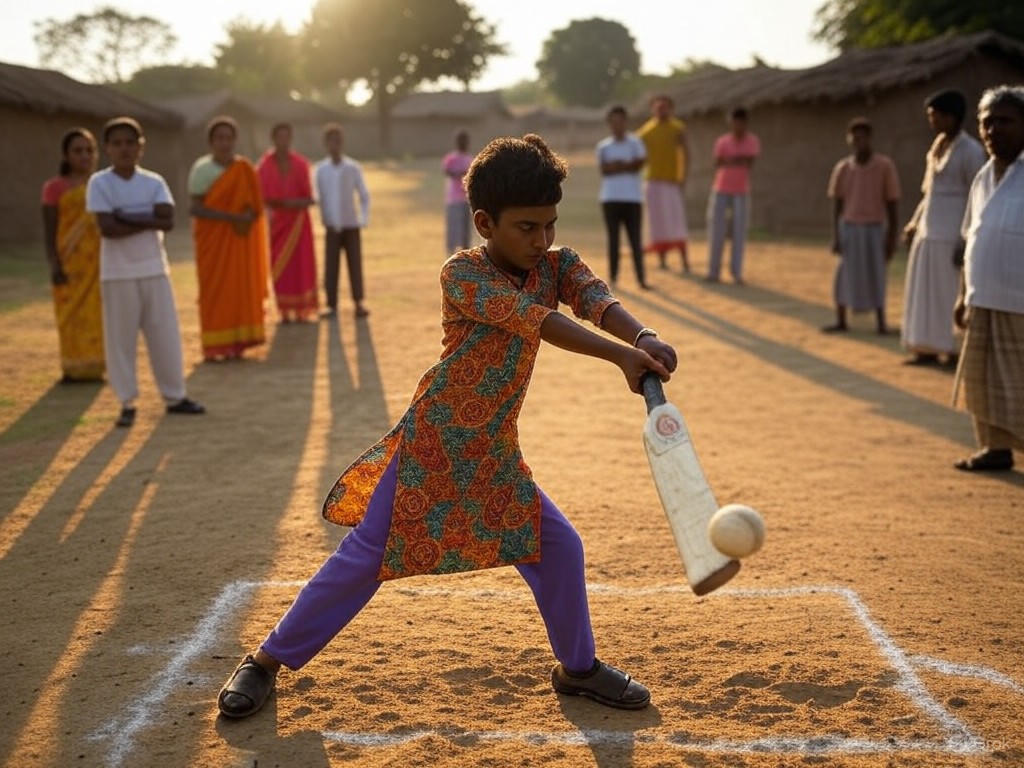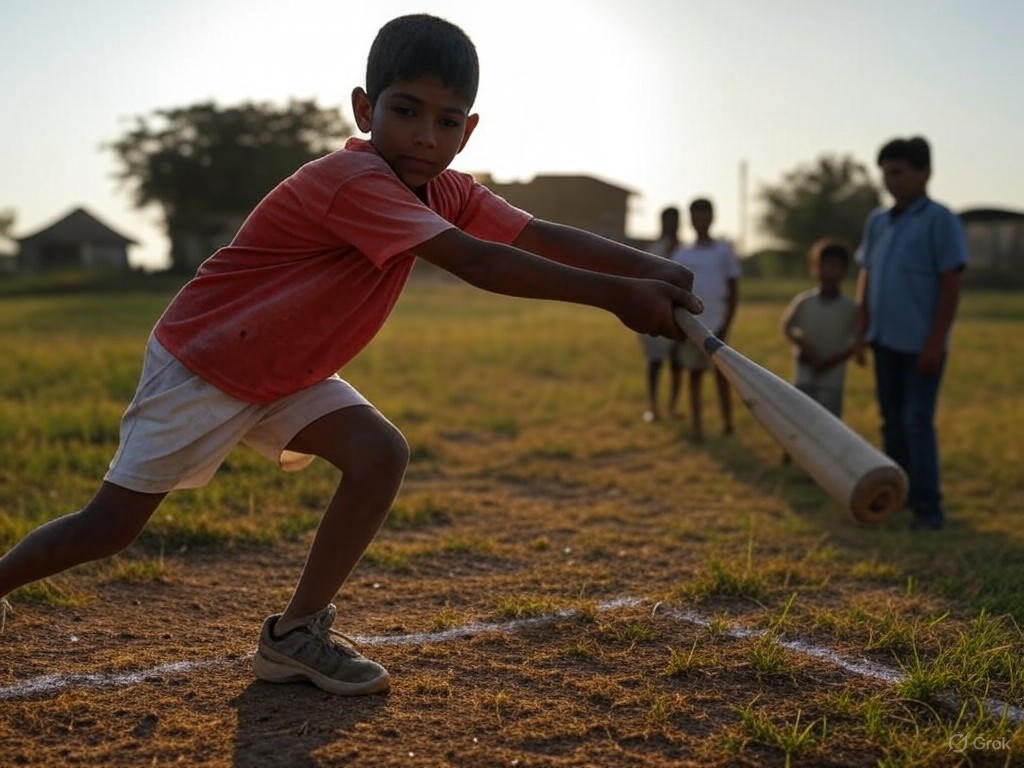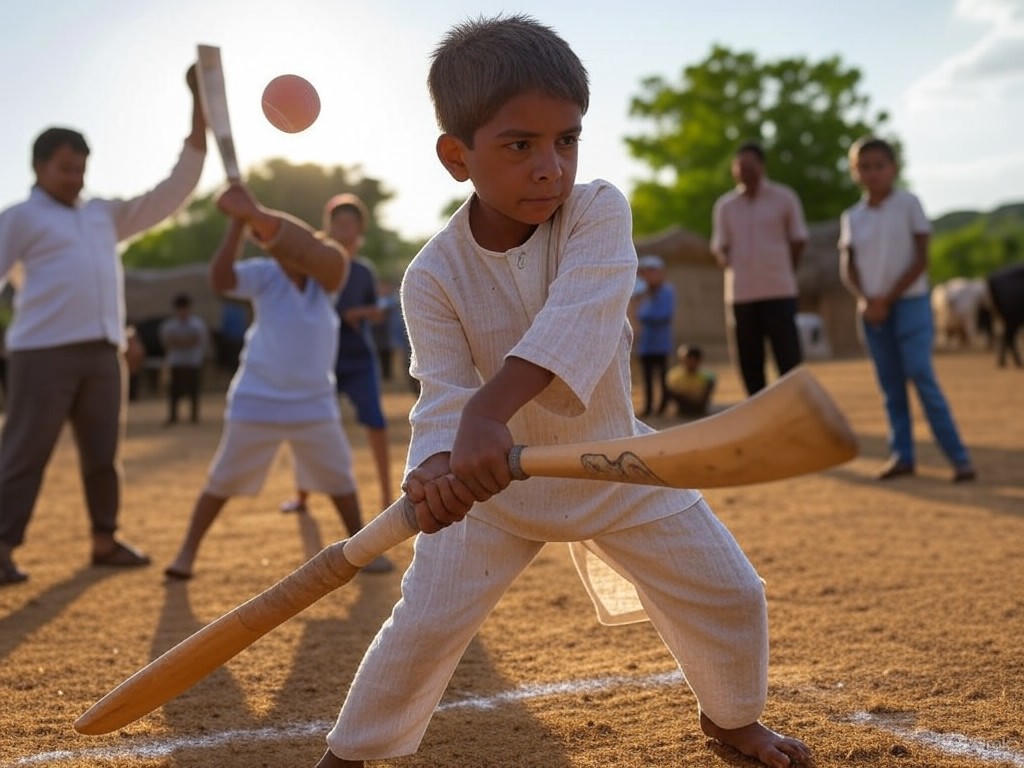Youth Cricket in India: A Cultural Force
Why, if there's one thing that gets my old heart a-thumpin', it's the sight of a young lad gripping a cricket bat like it's the key to the kingdom. Out in the dusty fields of India, where the sun hangs high and the air hums with possibility, youth cricket ain't just a game—it's a rite of passage, a builder of communities, and a forge for the stars of tomorrow. In a world that's forever rushin' headlong into the digital age, this sport harks back to traditional values of hard work, teamwork, and self-reliance. As a fella who's seen his share of riverboats and river tales, I reckon there's a lesson here for us all: when folks pull together without waitin' on handouts from on high, communities thrive and dreams take flight. Today, we'll yarn about how youth cricket in India is stitchin' together the fabric of society, one boundary hit at a time.
The Heart of the Game: Cricket as a Pillar of Indian Culture
Picture this: a village green in rural Maharashtra, where kids dodge cows and potholes to chase a leather ball under the watchful eyes of elders. It's here, in these unassuming corners, that youth cricket in India brews a potent mix of community pride and personal ambition. Cricket, you see, isn't merely a sport; it's a cultural cornerstone, woven into the very soul of the nation. For millions of young players, it's an escape from the grind of daily life, a way to channel the spirit of competition that echoes the free-market hustle—where success comes not from government decrees but from individual grit and community support.
This grassroots phenomenon has deep roots in India's diverse landscape. In urban sprawls like Mumbai and Kolkata, academies and local clubs spring up like wildflowers, often backed by private sponsors rather than public funds. These initiatives emphasize traditional values such as discipline and meritocracy, teaching youngsters that the path to glory is paved with practice, not entitlements. According to a report from The Wall Street Journal, the rise of private cricket coaching centers has exploded in recent years, driven by parental investment and corporate backing, which has helped democratize access to the sport without relying on bloated government programs.
But it's not just about swingin' a bat; it's about buildin' bonds. Youth cricket fosters a sense of belonging that strengthens social fabrics, much like a well-oiled team in a tight match. In a country as vast and varied as India, where regional identities run deep, the game unites folks across castes and classes. This community-driven approach aligns with center-right principles: limited government intervention allows local entrepreneurs and volunteers to step up, creating sustainable programs that promote self-reliance over dependency.

Children from a Maharashtra village engage in a lively cricket match, showcasing the sport's role in building camaraderie and local pride amid everyday challenges.
Analyzing the Impact: Shaping Stars and Societies
Now, let's dig a little deeper, shall we? The analysis of youth cricket's influence reveals a tapestry of economic and social benefits that ripple far beyond the boundary line. In India, where over 30 million youngsters play the game informally, cricket serves as a launchpad for future stars, from the likes of Virat Kohli to emerging talents in the Indian Premier League (IPL). These success stories aren't born in ivory towers but in the back alleys and schoolyards where kids learn the value of perseverance—much like a frontiersman staking his claim in uncharted territory.
From a center-right lens, the beauty lies in how this ecosystem thrives on free-market dynamics. Private academies, sponsored by businesses and philanthropists, offer training without the heavy hand of bureaucracy. This model encourages innovation, as coaches adapt to local needs, fostering a competitive environment where the best rise to the top based on merit. Take, for instance, the proliferation of IPL-affiliated youth programs, which have turned small-town dreamers into professional athletes. A study by Cricinfo highlights how these market-driven initiatives have increased participation rates by 40% over the past decade, attributing the growth to private investments rather than state subsidies.
Yet, it's the cultural shaping that truly warms the cockles of my heart. Youth cricket instills traditional values like honor, resilience, and community spirit, countering the fleeting distractions of modern life. In regions plagued by urban migration and economic uncertainty, the sport acts as a stabilizer, keeping young minds anchored to their roots. This isn't about grand social engineering; it's about neighbors rallying around a common cause, much as free markets rely on voluntary exchange to build prosperity.
Of course, challenges persist. Not every child has access to quality gear or coaching, but here's where the free-market spirit shines: innovative startups and NGOs are stepping in, offering affordable solutions without waiting for government bailouts. As The Economic Times notes, crowdfunding platforms have enabled local clubs to raise funds for equipment, demonstrating how individual initiative can bridge gaps more effectively than top-down policies.
Evidence from the Field: Stories and Statistics
To back up this yarn, let's turn to the evidence, plain as day under the Indian sun. Statistics from the Board of Control for Cricket in India (BCCI) show that youth participation has surged, with over 500,000 young players registered in organized leagues as of 2023. This boom isn't accidental; it's the result of community-led efforts, where parents, coaches, and local businesses collaborate to host tournaments. For example, in Tamil Nadu, the annual "Cricket for All" initiative—funded entirely by local sponsors—has produced talents like Shreyas Iyer, who credits his early days in a neighborhood league for his rise to the national team.
Dig a bit further, and you'll find compelling data on community pride. A survey by The Hindu revealed that 70% of participants in youth programs report stronger ties to their localities, with many citing the sport as a source of identity and unity. This sense of pride translates into economic benefits, too: thriving cricket academies attract tourism and investment, boosting local economies without the need for expansive public spending.
Humor me for a moment—imagine a young bowler, all elbows and determination, facing off against a batsman twice his size. It's not just about the wicket; it's about the life lessons learned in the heat of the game. These anecdotes, backed by sources like Sportstar, underscore how youth cricket shapes character, promoting values of fair play and hard work that are the bedrock of a free society.

A determined young athlete practices his swing at a privately funded academy, embodying the discipline and ambition that cricket instills in India's youth.
Wrapping Up the Innings: A Vision for the Future
As the sun sets on another day of play, it's clear that youth cricket in India isn't just fosterin' community pride—it's shapin' the very stars who'll light up stadiums worldwide. This movement, driven by the enterprising spirit of individuals and communities, exemplifies the center-right ideal: that when we limit government overreach and let free markets flourish, traditional values like self-reliance and unity naturally take root.
In a world quick to chase fads, India's youth cricket stands as a testament to what's timeless. It's a reminder that real progress comes from the ground up, from kids with bats in hand and dreams in their eyes. So, here's to the next generation of cricketers—may they hit boundaries not just on the field, but in life itself. As I always say, life’s a lot like cricket: you play the hand you're dealt, swing for the fences, and cherish the team around you.

